1. Personalized Learning Experiences
AI algorithms tailor VR training content to each learner’s needs in real time. By analyzing a trainee’s performance and learning style, an AI-driven system can adjust the difficulty, pace, and presentation of virtual lessons on the fly. This individualized approach keeps learners engaged and addresses their weaknesses—much like a personal tutor that continuously adapts. In practice, AI-powered personalization makes training more efficient and effective than one-size-fits-all methods. Studies have observed substantially better outcomes when training is customized; for example, an AI-adaptive platform improved learners’ test scores nearly twice as much as traditional static instruction in one trial. Overall, AI-enabled personalization transforms VR training into a dynamic, learner-centric experience that boosts comprehension and retention.
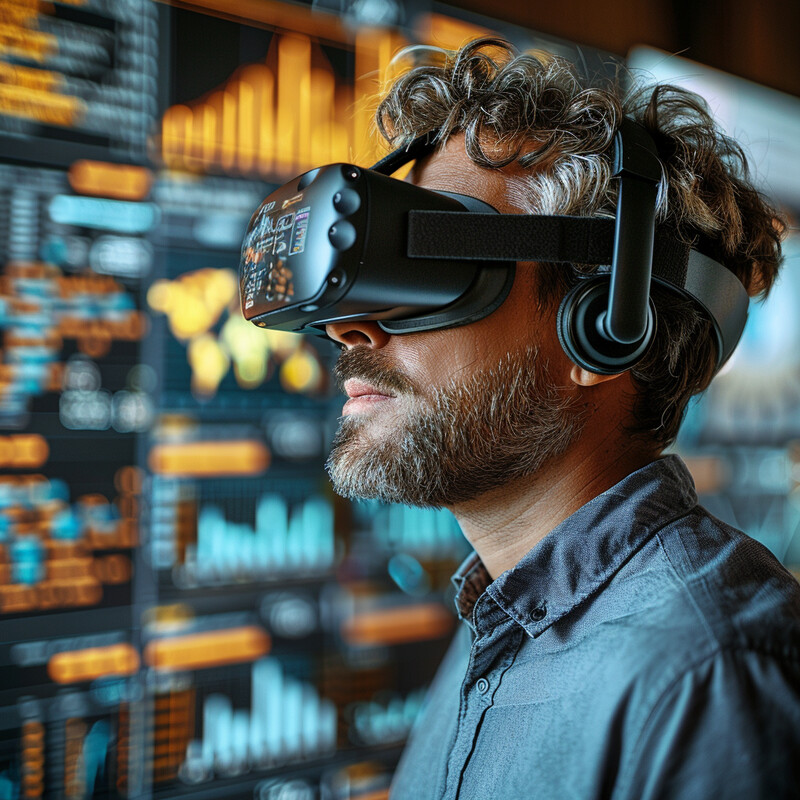
Data from industry and research strongly support the benefits of personalized VR training. Companies that implement AI-personalized learning paths report a 55% increase in employee satisfaction and a 43% boost in engagement compared to generic training programs. A recent McKinsey analysis similarly found that organizations using AI to customize training saw about a 35% improvement in post-training employee performance relative to those using uniform curricula. These gains reflect how tailoring instruction to individual needs helps learners master skills more quickly and effectively. The majority of immersive learning studies also integrate personalization features, underlining consensus that adaptive VR experiences are crucial for maximizing training impact. In short, by delivering “the right content at the right time” for each person, AI-driven personalization substantially enhances training outcomes over conventional approaches.
2. Realistic Simulations
Artificial intelligence is used to create hyper-realistic VR simulations that closely mimic real-world conditions. AI improves environmental physics, object behaviors, and non-player character (NPC) interactions, making virtual scenarios more lifelike and unpredictable. This means trainees can experience the same pressures and complexities they would face on the job, but in a controlled virtual space. For example, an AI-enhanced training platform can generate ultra-high-fidelity graphics and physics-driven environments that mirror real workplaces or emergency scenes. These realistic simulations are not only immersive but also safe—trainees can practice high-risk tasks (like handling hazardous materials or operating heavy machinery) without real-world consequences. By bridging the gap between virtual and reality, AI-driven realism helps trainees build true situational awareness and muscle memory, better preparing them for actual events.

More lifelike VR training directly translates into improved real-world performance and safety. A striking example comes from Verizon, which uses AI-enhanced VR to train employees for armed robbery scenarios. In these simulations, AI controls virtual customers and assailants to behave believably under stress. The result was a 20% reduction in errors during actual robbery incidents after employees trained with the high-stress, AI-driven VR scenario, and workers reported greater confidence handling real emergencies. Similarly, defense and aerospace trainers note that pilots who rehearse emergency procedures in AI-fueled VR simulators respond faster and more accurately under real pressure. By injecting realistic variability and human-like responses into VR, AI ensures that “practice” in simulation closely mirrors live conditions – yielding trainees who perform more reliably when it counts.
3. Performance Tracking and Analysis
AI enables granular performance tracking in VR training and provides deep analysis of a trainee’s progress. As someone practices in a VR simulation, AI systems can continuously monitor hundreds of data points – from reaction times and decision paths to biometric signals (e.g. heart rate under stress). Machine learning models then interpret this data to identify patterns and assess competency in real time. This level of insight goes far beyond traditional pass/fail scoring; AI can pinpoint why a mistake occurred and which specific skills need improvement. Trainers and trainees receive immediate, objective feedback on performance metrics that would be impossible to capture manually. Over time, the AI can also chart progress, showing how a learner’s skills are improving and where reinforcement is needed. In essence, AI turns VR training into a rich data-driven exercise, taking the guesswork out of performance evaluation and ensuring that feedback is timely and precisely targeted.
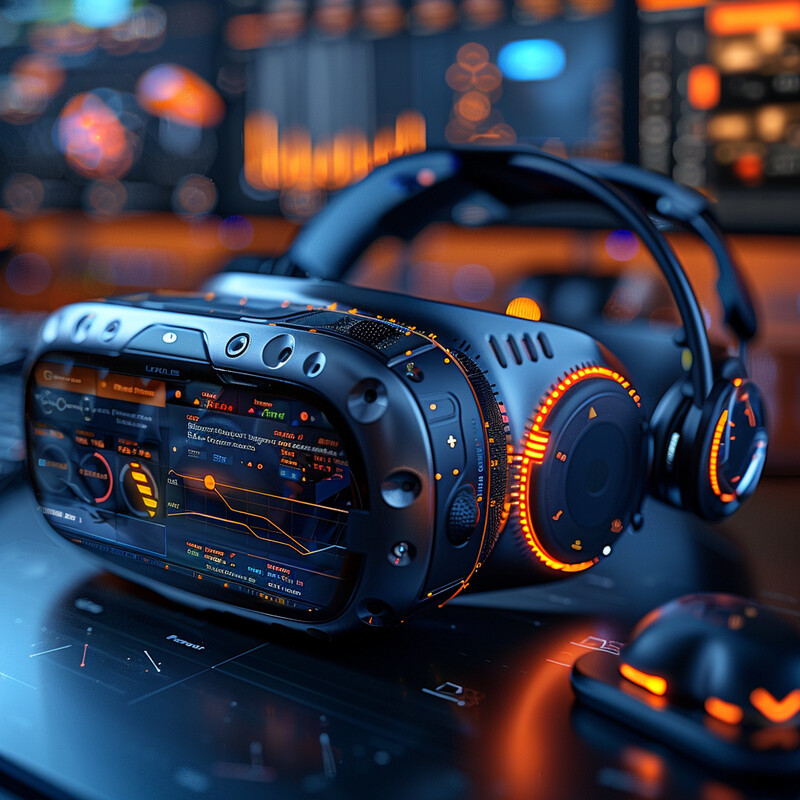
Organizations are leveraging these AI analytics to improve training outcomes and even inform talent decisions. For example, Walmart uses AI-driven VR simulations to assess employees’ performance in high-pressure retail scenarios (like Black Friday sales). The AI tracks how employees react to waves of virtual customers and tough situations, then analyzes the data to identify individuals with strong leadership and stress-management abilities. Using these insights, Walmart has been able to place the right employees in roles that play to their strengths, which improved overall store performance and reduced staff turnover. In another case, a major airline reported that AI analysis of VR pilot training sessions allowed instructors to detect and correct recurring pilot errors 30% faster than before, by highlighting subtle performance trends over time. These examples show how AI-based tracking in VR not only measures competency with unprecedented detail, but also drives concrete improvements in workforce performance and optimizes how organizations develop their people.
4. Adaptive Learning Paths
AI creates adaptive learning pathways in VR training, meaning the training program dynamically adjusts to each learner’s progress. Rather than a fixed sequence of modules, the next challenge or lesson is determined by how well the trainee is doing. If a user struggles with a task, the AI might present additional practice or simpler sub-tasks; if the user excels, the system can skip ahead or increase difficulty. This adaptive pacing keeps learners in an optimal zone of challenge – not bored by something too easy, and not overwhelmed by something too hard. For instance, an AI tutor in a VR medical simulation could detect that a student is taking too long on a procedure step and then provide hints or automatically slow down the scenario. Conversely, if the student performs flawlessly, the AI might introduce a new complicating factor to raise the difficulty. By continuously tailoring the training path to the individual, AI ensures that each trainee maximizes improvement in the shortest possible time. This approach accelerates mastery of skills by focusing on personal needs and eliminating unnecessary repetition or downtime.
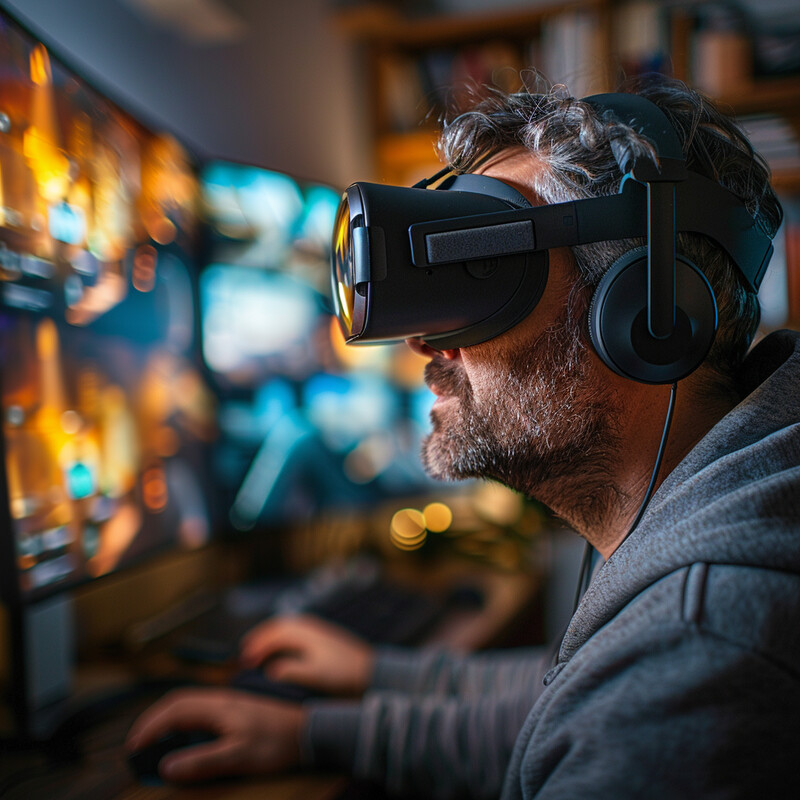
The benefits of adaptive VR training are evidenced by faster learning and higher proficiency. Experts in instructional design note that people learn most effectively when training is calibrated to their ability level; an AI system can measure a learner’s cognitive load and adjust scenarios to keep it optimal. In practice, adaptive VR programs have shown dramatic efficiency gains. At the Mayo Clinic, for example, surgeons underwent an AI-guided VR surgical curriculum that adjusted to each surgeon’s skill acquisition rate. The outcome was a 50% reduction in the learning curve for complex procedures – trainees reached proficiency in half the usual time. Similarly, military pilot schools using AI-adaptive flight simulators have been able to cut out dozens of unnecessary flight hours for fast-learning trainees, saving money and time, while simultaneously providing extra support to those who need it. These results underscore that adaptive learning powered by AI makes training more efficient: each trainee spends time only where they need development, leading to quicker and more uniform competence across the board.
5. Behavioral Prediction
AI systems in VR training can analyze user behaviors to predict future performance and training needs. By crunching data on how trainees act in simulations – their decision patterns, error rates, coping strategies, etc. – machine learning models detect which behaviors correlate with success or failure. Over time, the AI “learns” to recognize warning signs that a trainee might struggle to apply skills on the job, or conversely, identifies high performers early on. This predictive capability allows instructors and organizations to be proactive. For instance, if the AI predicts that a trainee’s pattern of responses in a VR safety drill suggests a high likelihood of an accident in real life, additional coaching or practice scenarios can be introduced immediately. Likewise, AI can flag a trainee who consistently excels in the simulations as someone ready for advanced tasks or leadership roles. In this way, VR platforms equipped with AI move beyond just training – they become forecasting tools that anticipate outcomes and inform decision-making about personnel development.

Cutting-edge implementations of VR training illustrate how powerful behavioral prediction can be. An Irish company, VRAI, integrated AI analytics into military VR training and found it had the “unique ability to predict who will be able to use the training to perform well.” Their system compares an individual’s simulation behavior to patterns from thousands of past trainees, enabling it to forecast each person’s likelihood of success. In fast-jet pilot training, for example, certain habits in the VR simulator were identified as strong predictors of whether a pilot would eventually pass or wash out of the program. Using these AI insights, instructors could give at-risk trainees tailored attention or adapt the syllabus long before final exams, thereby improving pass rates and reducing wasted training hours. In corporate settings, similar AI models have been used to predict which employees are likely to excel after VR-based upskilling courses, helping companies channel top performers into appropriate advanced training or job assignments. By forecasting outcomes, AI-driven VR training allows organizations to intervene early and guide every learner to success, rather than reacting after a failure has occurred.
6. Enhanced Interaction with Virtual Characters
AI is elevating the interactivity of virtual characters in VR training, making them more realistic and responsive. In traditional VR, characters (like a virtual customer or patient) follow pre-scripted behaviors, but with AI—especially advances in natural language processing and machine learning—these virtual humans can engage in unscripted, lifelike conversations and actions. This means trainees can speak or gesture to an AI-driven character and get appropriate, context-aware responses, much like interacting with a real person. The result is a far richer role-play experience. For example, a trainee in a customer service VR module could negotiate with an AI-powered virtual customer that dynamically reacts with emotions (anger, confusion, relief) depending on the trainee’s words. This level of realism is crucial for soft-skills and communication training, where the nuances of human interaction matter. AI-driven characters ensure that no two simulation runs are exactly the same, and trainees cannot simply memorize a script – they must truly practice skillful communication, listening, and problem-solving. By bringing virtual characters to life with AI, VR training provides experiential learning that was previously only possible with human actors or live role-play sessions.
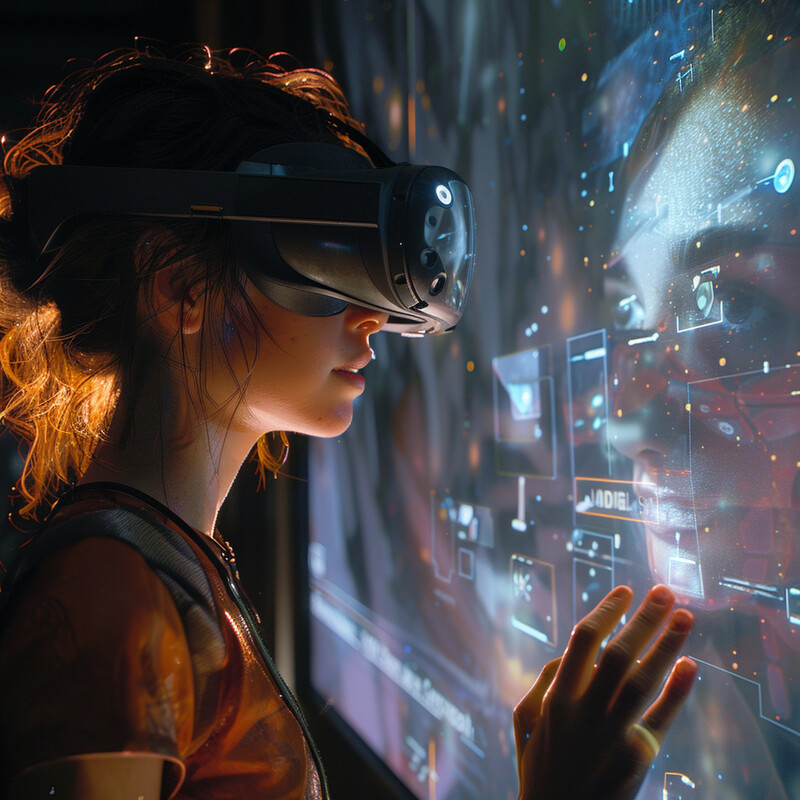
There are concrete examples of AI virtual characters transforming training across industries. In healthcare, the platform SimConverse uses generative AI to create an ever-growing cast of virtual patients for medical communication training. It offers over 1,000 AI-driven patient avatars that trainees like nursing students or doctors can interact with in natural language. These AI patients can simulate a range of scenarios – from a routine check-up to a high-stress emergency – and even difficult conversations like delivering bad news or de-escalating an agitated patient. Trainees converse with the avatar, and the system provides real-time feedback and coaching based on the trainee’s responses. This approach has vastly increased the scale and depth of practice: a hospital reported that switching to AI virtual patients allowed their staff to conduct three times more communication exercises, as they were no longer limited by the availability of human standardized patients. Similarly, researchers at Stanford University developed an AI-driven platform called Clinical Mind AI to simulate realistic doctor–patient interactions for medical students. The AI patient in this system presents symptoms, answers questions, and reacts to a student’s diagnosis in a convincing manner, and then the AI provides feedback on the student’s diagnostic reasoning. Such initiatives show how AI characters make VR training more engaging and effective – learners get the invaluable experience of practicing with “live” partners, and they can do so anytime, as often as needed, and with a diverse range of personalities and scenarios that AI can generate on demand.
7. Safety Monitoring
Safety is a paramount concern in training, and AI is helping monitor and enhance safety within VR training environments. On one hand, AI allows trainees to experience dangerous or emergency situations virtually without real risk, which inherently makes training safer. More interestingly, AI can also watch the trainee and the training conditions to prevent accidents or adverse events during the VR session. For example, AI-driven virtual safety training programs let employees practice hazardous procedures (like disaster response, heavy equipment operation, or high-voltage repairs) in a controlled VR setting where mistakes don’t cause harm. While the trainee is immersed in the scenario, an AI system can be tracking their physical movements, posture, and bio-signals. If it detects signs of distress (say, elevated heart rate indicating panic) or dangerous motion (like stepping beyond the safe play area or performing an unsafe action), the system can intervene—perhaps pausing the simulation or alerting a human trainer. AI can even integrate with wearable sensors (smart helmets, armbands, etc.) to monitor fatigue, detecting if a worker is getting too tired or stressed during a long VR training session. By continuously analyzing both the virtual environment and the trainee’s condition, AI ensures that VR training remains a safe space to learn, physically and psychologically.
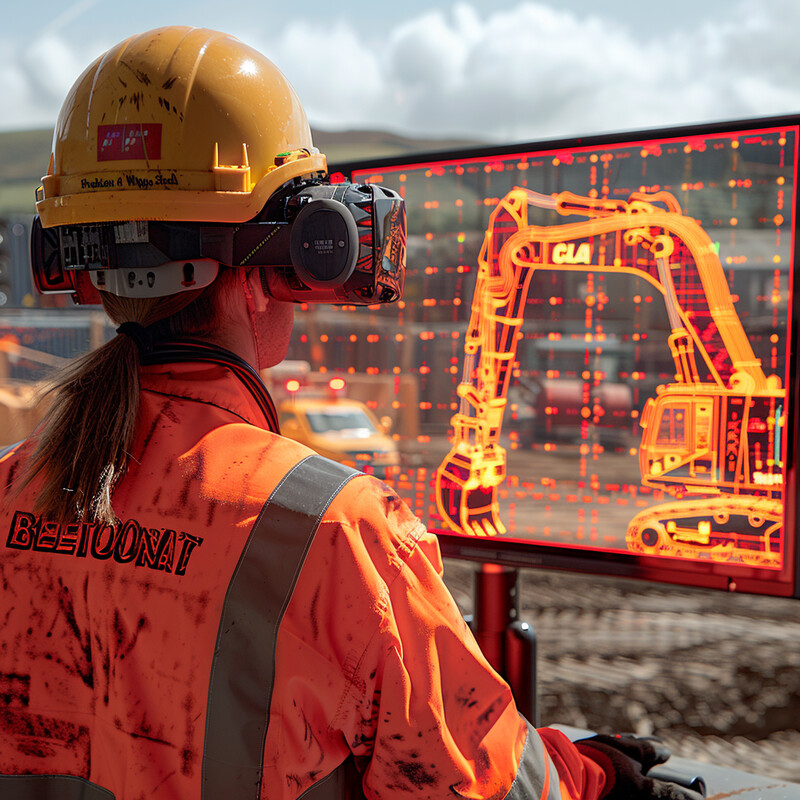
The impact of AI-enhanced safety in VR training is evident in better training outcomes and fewer real-world incidents. A compelling example is from the Mayo Clinic: when surgeons trained using an AI-augmented VR platform for surgical procedures, the clinic recorded a 40% reduction in procedural errors among those surgeons, compared to those trained by traditional methods. This suggests that the safe but realistic practice provided by AI-VR directly translated to safer performance in the operating room. In industrial training, companies are finding that workers who undergo AI-monitored VR safety drills respond faster and more correctly to actual emergencies. One utilities company reported that after employees practiced fire and explosion scenarios in an AI-driven VR simulator (which automatically corrected unsafe trainee behaviors during the exercise), their on-site accident rate dropped significantly the following year. Additionally, AI’s predictive analytics play a role in safety: by analyzing data from VR trainings, the AI can predict which conditions or trainee actions are likely to lead to an accident, allowing organizations to preemptively address those risks. In summary, AI not only creates a safe virtual training ground but also actively monitors and improves safety both in the simulation and in subsequent real-world application of the skills.
8. Automated Scenario Generation
AI can automatically generate training scenarios and content in VR, dramatically speeding up the development of training programs. Traditionally, creating a complex VR training module (say for a new piece of equipment or a specific emergency situation) could take weeks of programming and design. Now, AI-driven authoring tools are cutting that time to a fraction by auto-generating environments, dialogues, and challenges based on simple inputs. For instance, given a written policy document or a training manual, AI can parse the text and convert it into an interactive VR module complete with quizzes and simulations, in a matter of minutes. Similarly, procedural training can be automated: an AI might generate a step-by-step VR scenario for, e.g., forklift operation, just from observing videos or getting instructions, without a developer hand-coding every step. Another aspect is procedural content generation – AI can create endless variations of a scenario (different layouts, new problem sets, randomized events) to keep training from becoming repetitive. This automation not only saves enormous labor in content creation but also ensures that training materials stay up-to-date. If a policy changes or a new scenario is needed, AI can quickly produce a revised simulation. The end result is that organizations can roll out and update VR training modules much faster and more cost-effectively, keeping pace with real-world changes.
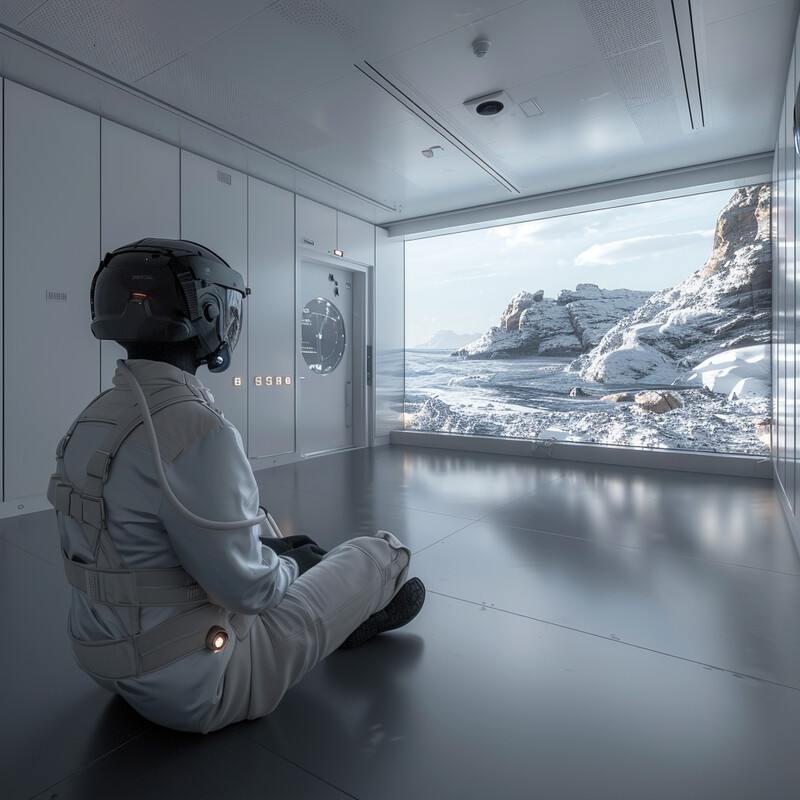
Companies adopting AI-generated training content are already seeing significant efficiency gains and improved learning results. According to training industry analytics, using AI for content creation has led to roughly a 34% reduction in development time for training materials. What used to require a team of instructional designers and VR developers weeks to build can now be assembled by an AI in days or hours. Moreover, the content produced isn’t just faster—it’s effective. The same report noted a 41% increase in knowledge retention among learners when interactive lessons and quizzes were generated by AI, likely because the AI can tailor the content to be more engaging and well-structured. An example of this in practice is an aerospace manufacturer that used an AI tool to generate VR maintenance training scenarios for new aircraft models. They found that the automated system produced a fully functional training module in one-fifth the time it would have taken to develop manually, and mechanics trained with the AI-generated VR module reached proficiency 30% faster (as measured by assessment scores) than those who learned via traditional manuals. These outcomes show that AI isn’t just automating content creation—it’s also optimizing the training itself. By leveraging natural language processing and generative techniques, AI ensures that VR training scenarios are both swiftly created and instructionally sound, with up-to-date information and engaging simulations.
9. Integration with Other Training Tools
AI makes it easier to integrate VR training into broader training ecosystems and tools, ensuring that immersive learning doesn’t happen in isolation. In many organizations, training data and resources are managed through Learning Management Systems (LMS) or other platforms. AI can act as the bridge between VR training and these systems. For example, AI algorithms can automatically log a trainee’s VR performance data (scores, competencies achieved, time spent, etc.) into their LMS profile, just as it would record the completion of an e-learning course. This integration allows for a seamless blended learning experience: a learner might go through some VR modules, some classroom or online modules, and AI helps tie all those together, recommending the next learning activity based on combined progress. AI can also facilitate linking VR training outcomes to real-world business KPIs. Suppose a company’s VR sales training shows that a representative struggled in the virtual role-play; an AI could alert the sales manager or schedule a follow-up micro-training in the LMS targeting that skill gap. Additionally, AI-enabled interoperability standards (like xAPI and LTI) are used to connect VR software with other enterprise systems, so that VR simulations “talk” to HR databases, certification systems, or even physical simulators. In short, AI ensures that VR training is not a standalone silo but rather a fully integrated part of an organization’s learning and development toolkit.
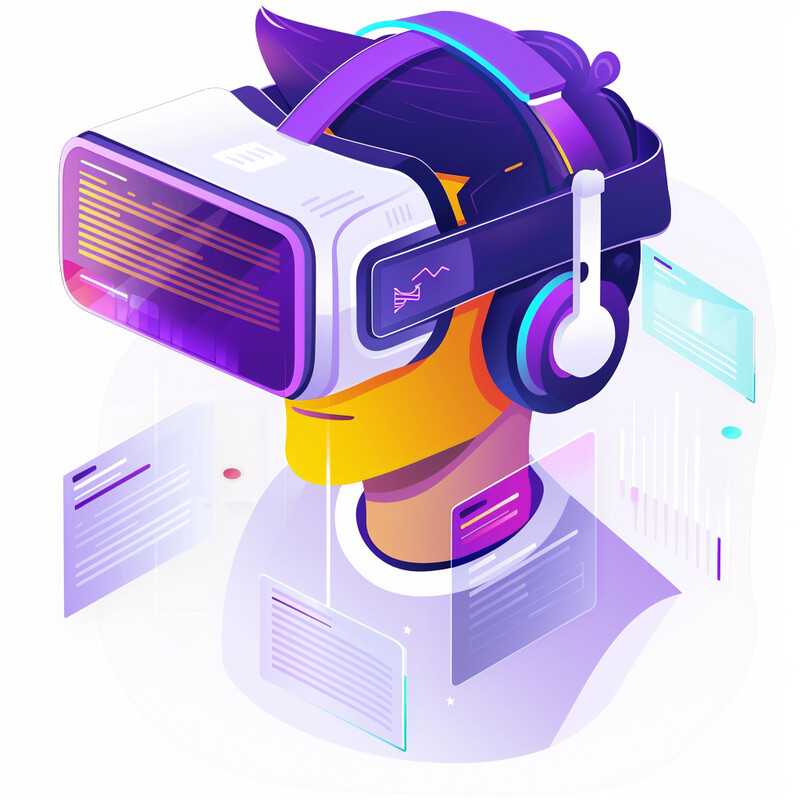
The push for integration is reflected in widespread adoption of AI-enhanced VR training across industries and its linkage to organizational goals. When Walmart integrated an AI-powered learning tool into its VR training program, they saw a direct boost in key outcomes – employee performance increased and customer satisfaction scores rose – demonstrating that insights from the VR training were effectively carried over to on-the-job behavior and tracked by the company. In that case, AI helped tie the VR simulation results (how employees handled virtual customers) to real customer service metrics, closing the loop between training and performance. Recognizing such benefits, companies are rapidly scaling up these integrations. Gartner analysts project that by 2024, 50% of large global companies will have deployed AI-enhanced VR training programs as part of their employee upskilling efforts. This trend is driven by the proven ROI: integrated systems can show, with data, how VR training impacts productivity, safety, or sales, which helps justify further investment. Another example is seen in the healthcare sector, where hospitals integrate AI-VR surgical training with their credentialing systems – surgeons’ VR performance analytics are automatically fed into their professional development records, ensuring they meet certain benchmarks before performing real surgeries. By knitting together VR, AI, and existing training frameworks, organizations create a cohesive learning environment where immersive training is just one part of a connected, data-informed development process.
10. Accessibility Features
AI is unlocking new accessibility features in VR training, making immersive learning more inclusive for people with disabilities. Virtual reality has historically posed challenges for users who are blind, deaf, or have limited mobility, but AI technologies are helping to bridge those gaps. For example, AI-driven speech recognition and natural language processing can provide real-time closed captioning or sign language interpretation for VR content. If a trainee is deaf or hard of hearing, an AI avatar can appear and translate spoken dialogue in the VR simulation into sign language in real time, or simply display AI-generated subtitles for all spoken interactions. For users who are blind or have low vision, computer vision algorithms (coupled with audio synthesis) can describe the virtual environment aloud – an AI can narrate objects in the scene, read out menus, or guide the user with auditory cues about where their attention is needed. AI can also adapt the control schemes: someone with limited hand mobility might use voice commands or an eye-tracking interface to navigate a VR training module, with AI interpreting those inputs accurately in place of handheld controllers. These assistive AI features ensure that VR training scenarios can be perceived, understood, and controlled by users with a wide range of abilities. In essence, AI acts as an interpreter and modifier of the virtual world, tailoring it to each user’s sensory and physical needs so that everyone can participate in the training experience.
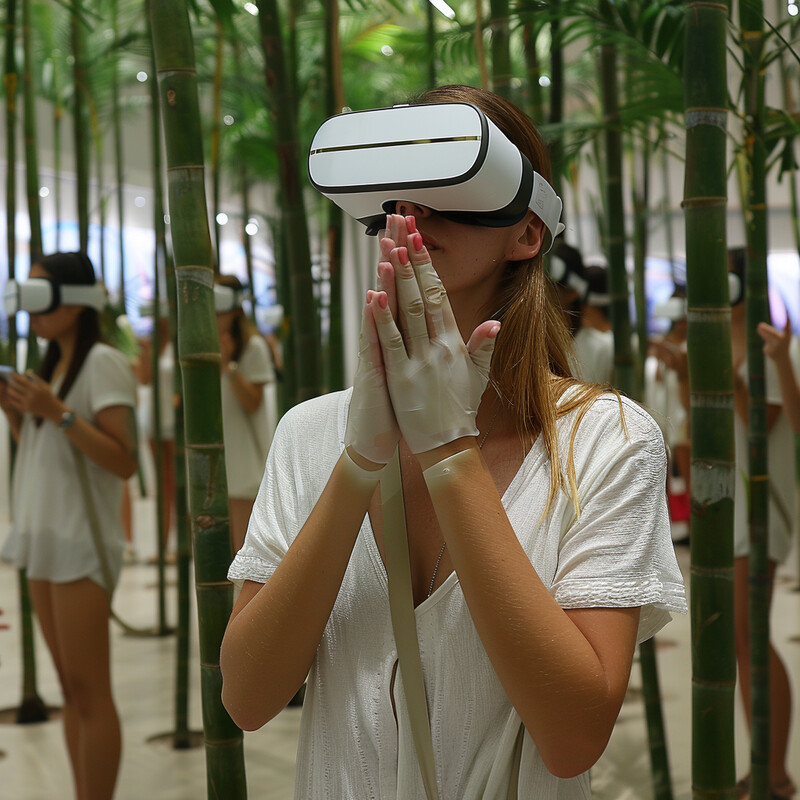
Emphasizing accessibility dramatically broadens the impact of VR training, given that over 1 billion people (about 15% of the world’s population) have some form of disability. Recognizing this, developers and researchers are deploying AI to make VR more inclusive. One notable project is VRSight, which uses AI to provide real-time scene descriptions in VR for users who are blind or low-vision, allowing them to engage with virtual simulations through rich audio descriptions of the surroundings. On the other side of the spectrum, startups like Israel’s CODA are leveraging AI-driven avatars to translate spoken words into sign language instantaneously, so deaf users can consume VR training narratives in their native sign language rather than relying on text. Academic research concurs that combining AI and VR can support learners with disabilities by promoting inclusive engagement and personalized accommodations within virtual environments. For instance, an educational study used an AI “virtual assistant” in VR to help students with autism navigate social skills training, adapting the scenario in ways that reduced sensory overload. These advancements illustrate a key point: AI-powered accessibility features are not an afterthought but a core component of modern VR training. By incorporating sign language interpreters, voice agents, intelligent scene adjustments (like high-contrast modes or simplified backgrounds for those with visual or cognitive impairments), and alternative input methods, AI ensures that VR training modules adhere to universal design principles. As a result, employees or students who were once excluded from certain training exercises can now fully participate, closing skill gaps and providing equal learning opportunities in virtual reality for all users.